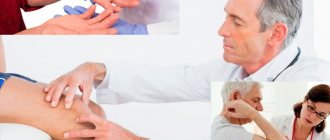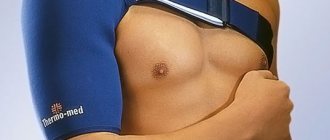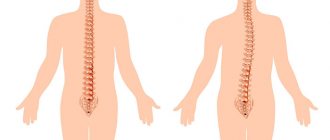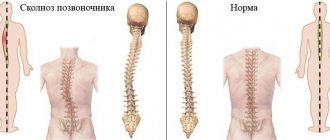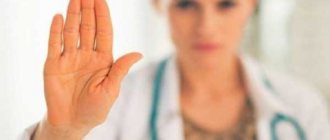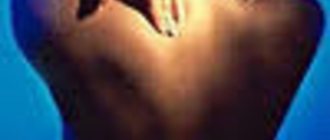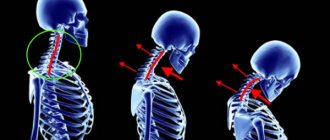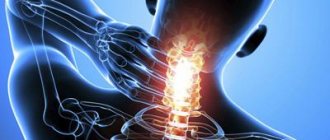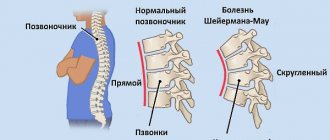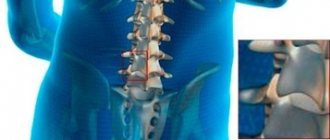Is it possible to mistake an elderly person for a young person from afar? In very, very rare cases, isn't it? After all, a person’s age is revealed, first of all, by posture. More precisely, its absence.
Due to natural causes, various diseases, and also due to the inability (unwillingness) to take care of the health of our back, over the years we begin to literally “bend to the ground.” It is no coincidence that even a child can portray an old man, bending over in an arc and leaning heavily on a stick.
Of course, you can always cite the example of ballet stars or actors who maintain excellent posture into old age. However, among ordinary citizens of advanced age, the percentage of “upright walkers” is very, very modest. And this is not surprising - the proportion of people with various pathologies of the musculoskeletal system in the world is 80%-85%.
The most distressing thing about all this is that in the vast majority of cases, problems with the spine, figuratively speaking, are the creation of our own hands. It’s not for nothing that parents and teachers constantly urge children not to slouch and straighten their backs. “Minor” childhood posture disorders are not at all harmless. They are harbingers of spinal curvature , a serious pathology fraught with a whole bunch of dangerous health consequences.
There are 3 main types of spinal curvature: scoliosis, kyphosis and lordosis .
1
Treatment of spinal curvature
2 Treatment of spinal curvature
3 Treatment of spinal curvature
Types of deformation
The following main types of curvature are distinguished:
- Lordosis;
- Kyphosis;
- Scoliosis.
Scoliotic deformity of the spine is expressed by a sideways displacement of the vertebrae. The most common is scoliotic deformity of the thoracic spine. This type of change mainly manifests itself at school age. Scoliosis deformity can be s, z and c shaped. The latter is much more common than others and represents a right- or left-sided curvature.
Lordosis is a forward deviation of the spinal axis. The most common deformity is the cervical and lumbar spine, less often combined with thoracic kyphosis. With lumbar lordosis, the mobility of the lower extremities may be limited. Curvatures, especially strong ones, affect the functioning of internal organs: lungs, kidneys and heart.
Kyphosis is characterized by backward bending of the axis and has two development options. It is arched and angular. Kyphotic deformity of the cervical spine is extremely rare, since the natural direction of curvature in this part is lordosis.
Also, different groups of changes in the shape of the spine can be combined, for example, kyphoscoliotic spinal deformity . That is, the displacement occurs in several directions at once. Curvatures are often localized specifically in the sacral region, since the load on this segment of the spine is quite serious.
Another type of change in the normal shape of the spine is spondylosis . It is caused by the proliferation of bone tissue with the formation of processes, spines, and narrowing of the spinal canal.
Compression deformation of the spine occurs as a result of strong impacts and other loads.
This mainly occurs when falling and hitting the head. As a result, the length of the spinal column decreases, and compression of the dural sac of the cervical spine may increase.
Content:
- Causes of spinal curvature
- Classifications and types of curvature
- Differences in back curvature in adults and children
- Short description
The human spine is exposed to a lot of stress every day. Due to the influence of negative factors, posture changes. Spinal curvature can be congenital or acquired. The condition affects the patient’s well-being, the quality of the circulatory and nervous systems. The pathology is treated by an orthopedist who prescribes treatment individually for each patient.
Symptoms
The sensations of patients are different and depend on the type, degree of curvature and its location.
- When the disorder is just beginning , and there are no changes in well-being, it can be determined by stooping, raised shoulders, and different heights of the shoulder blades. This is the first degree of curvature.
- The second degree is considered to be the formation of an angle of 10 to 25 degrees between the vertebrae. In this case, there is a difference in the tone of the muscles on the back, pain appears and physical activity begins to bring discomfort.
- The next degree - the third - is accompanied by an increase in the angle of curvature to 50 degrees. This deformation is visible to the naked eye; it is noticeable in the photo when a person is wearing thick clothing. With such a curvature, even the smallest loads cause serious discomfort; discomfort and pain do not stop even at rest.
- The fourth degree is the most severe. It brings not only pain, but also has a sharply negative effect on the functioning of internal organs. The lungs, stomach, liver and heart cannot function properly and the body experiences severe stress.
Depending on the location of the changes, the symptoms also change. If the cervical spine is curved, this leads to headaches. The lumbar region affects the functions of the reproductive system, motor and sensory disorders in the legs.
If the patient suffers from wedge-shaped deformity, this change is accompanied by severe pain, shortness of breath, decreased lung capacity, high fatigue, and headaches.
Differences in back curvature in adults and children
The most severe form of spinal curvature is considered a congenital disorder. It is almost impossible to eliminate them. This requires medication, bone realignment, exercise therapy, and surgery.
If the condition is acquired, it is recommended to consult a doctor at an early stage. The reasons are almost the same for adults and children. At an early age, curvature of the spine can develop as a result of rickets. Therefore, preventive measures should be taken to avoid this disease. In old age, arthritis and other inflammatory diseases of the joints often develop, as a result of which a person cannot keep his back straight due to severe pain.
Pathology caused by improper sitting and walking is equally common in adults and children. It can be cured by straightening the back and using exercise therapy. This will eliminate the root cause of poor posture. If there is a systemic disease at any age, additional drug treatment will be required.
Why are spinal deformities dangerous?
If distortions appear, it is worth taking measures to eliminate them. Otherwise, the consequences can be extremely unpleasant. Over time, hernias may appear, knees and other joints may suffer. In addition, the more serious the degree of curvature, the stronger the pain and discomfort during movement and at rest.
Also, a curved spine has a negative impact on the functioning of internal organs and the body as a whole. The chest often becomes smaller in volume, constricting the heart and lungs. In addition, disturbances can affect breathing, provoke congestion in the lungs, pneumonia and bronchitis of varying severity.
The genitourinary and digestive systems suffer from distortions. In women, this can result in infertility and various neoplasms. In men – in decreased sexual function and other unpleasant changes.
It is also worth noting the emergence of psychological barriers and even depression due to changing appearance and the inability to communicate with the world as before.
Congenital scoliosis
Surgical treatment of congenital scoliosis
Surgical treatment of congenital scoliosis can be used in such patients as:
- In the event that the deformation progresses too quickly during X-ray observation.
- With too noticeable curvatures.
- With severe deformation of the spine or torso.
- In the event that neurological symptoms begin to appear, for example, from part of the spinal cord or nerve roots.
One of the most important goals of surgery in the treatment of congenital scoliosis is to give a chance for growth of the spine, as well as the chest. At the moment, there are several types of surgical treatment for congenital scoliosis.
Do you have a question? Ask our doctors.
Spinal fusion
Spondylodesis is a surgical intervention, the purpose of which is to provide the possibility of fusion of deformed vertebrae, so that 1 bone will emerge from them. This fusion does not allow the abnormal vertebrae to develop further, and therefore does not provide the opportunity for the spine to bend at enormous speed. During spinal fusion, intervertebral discs are removed and bone fragments are placed in their place, which speed up the process of fusion of the vertebrae.
Hemivertebra removal
With a single hemivertebra, it can be removed surgically. In this case, the partial correction of curvature, which is achieved by such an intervention, is supported by metal structures implanted into the spine. Thus, it is possible to fuse only two or three vertebrae.
Growing rods
The name “growing rods” does not mean at all that they grow in the literal sense of the word. They can be lengthened during minimally invasive interventions, which must be performed every 6-8 months. Growing rods are metal structures that are attached to the vertebrae with bolts. Every 6-8 months, such a rod must be lengthened by 1 cm. The first surgical intervention, which is performed to install a growing rod, can take about two hours, and further lengthening of the rod, which must be carried out approximately once every six months, can be done in a hospital setting. When the entire length of the rod is used, it is removed and spinal fusion is performed - fusion of the vertebrae.
VEPTR
These are also metal structures that have found application in the treatment of children with congenital scoliosis, which is accompanied by curvature of the chest. VEPTR is an effective treatment method for this category of patients; due to the use of various corsets, it may not be effective enough. A distinctive feature from growing rods is the method of attachment - this structure is attached to the ribs. It not only straightens the spine, but also spreads the ribs, preventing possible curvature of the chest and breathing problems in children with congenital deformity of the spinal column. Correction of the size of the structure is carried out simultaneously with correction of the length of the growing rods.
Rehabilitation
The recovery of babies after this type of surgery is usually quick, and after a week the patient can go home. Everything depends on the type of operation performed; the baby may be prescribed to wear a special corset for 3-4 months.
After absolute recovery, the child is not prohibited from virtually any physical activity.
Treatment methods
Treatment usually takes time and patience. Different therapeutic options can be used individually or in combination. Usually these are combinations of medication, physiotherapy and manual treatment. If conservative methods are powerless, the problem is eliminated surgically.
For curvatures of the first and second degree, it is usually possible to do without surgery. Patients do exercises, wear corsets, and eat a healthy diet. Exercises in the pool are effective. Exercise therapy and a swimming pool are also excellent prevention of spinal diseases.
Surgery is needed for third and fourth degree changes.
Division of scoliosis by severity
- Scoliosis 1st degree. The lateral deviation is small (up to 10 degrees). The degree of twisting is also small (twisting is determined by the deviation of the spinous processes from the midline and the asymmetry of the roots of the arches).
- Scoliosis 2 degrees. The primary arc of curvature is 10-25 degrees. The twisting is noticeable. X-rays show deformation of the vertebral bodies in the upper part of the curvature. Due to the twisting of the spine, a muscle roll can be clinically identified.
- Scoliosis 3 degrees. The primary arc of curvature is 25-40 degrees. The deformity is even more pronounced; there is a large rib hump and severe deformation of the chest. The X-ray shows that there are wedge-shaped vertebrae in the upper part of the curvature and adjacent areas.
- Scoliosis 4 degrees. The angle of the main curvature is 40-90 degrees. Severe disfigurement of the torso. Posterior and anterior costal hump, deformation of the pelvis and chest, kyphoscoliosis of the thoracic region, desaturation of the ligamentous apparatus. Radiographs show severe wedge-shaped deformation of the thoracic vertebral bodies.
Who will treat you?
Bogdanov Vadim Yurievich
chief physician, traumatologist-orthopedist.
More details
Dremin Evgeniy Vitalievich
neurologist, reflexologist, chiropractor.
More details
Karavaev Nikolay Nikolaevich
chiropractor, osteopath, neurologist, neurosurgeon
Read more
Prevention
Prevention is aimed at eliminating the causes of the disease. It is important to monitor your posture while walking, sleeping and sitting even in childhood. All muscle loads must be symmetrical. It is necessary to lead an active lifestyle and go swimming. Effective methods of prevention also include kinesitherapy on an ongoing basis. We will talk about it below.
Diagnostics
Deviations of the spinal column can be detected by a visual examination by an orthopedist or surgeon. A scoliozometer is used to determine the degree of change. In some cases, radiography and magnetic resonance imaging are prescribed. X-rays are used to determine the shape and angle of the curvature. An MRI will show whether there are other pathologies of the spine: protrusions, hernias, tumors.
Signs of disease development
- asymmetry of the shoulder blades, hips, folds of the buttocks;
- slouch;
- headaches and shortness of breath;
- fast fatiguability;
- numbness of the limbs;
- cardiopalmus;
- high blood pressure.
The latter signs occur with moderate to severe changes in the spine.
The health of all other organs depends on the condition of the spine - with scoliosis, they can be compressed, twisted, and this causes malfunctions in their functioning.
Chronic cardiac and respiratory failure may develop. The disease can also cause hypertension, which cannot be controlled by taking high blood pressure medications.
In addition, if you do not pay attention to the problem, the disease becomes advanced. A person experiences chronic pain, neuralgic diseases and osteochondrosis develop.
Timely treatment of scoliosis in adults in our center will allow you to avoid these problems and get rid of curvature without surgical intervention.
